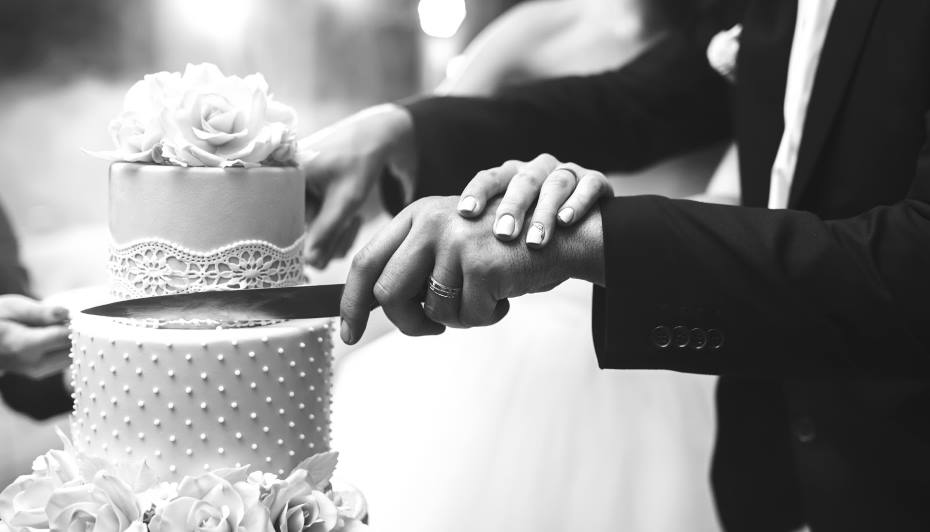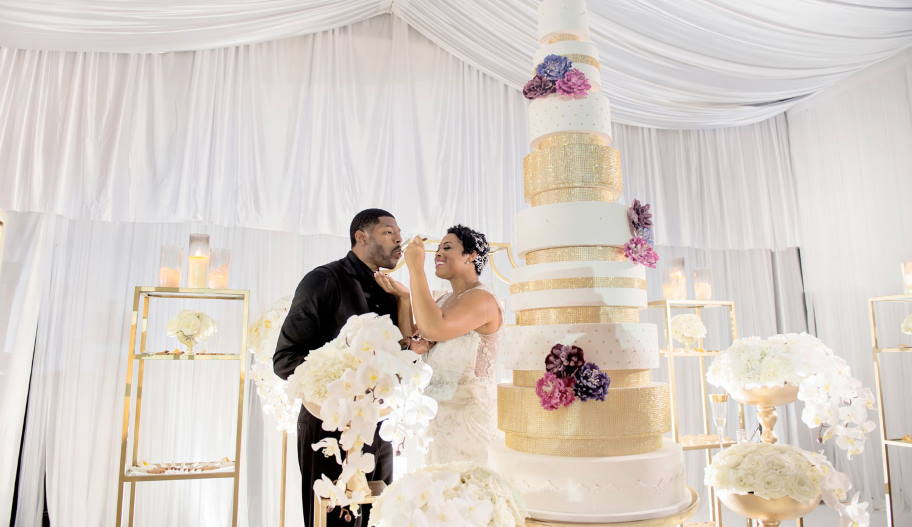The cut of the wedding cake is an occasion as traditional and meaningful as the cake itself. The cut of the cake is steeped in the wedding tradition but (until recent years) has always been associated with the bride alone.
Today, icing and wedding cake construction and design have dramatically changed though, the cutting of the wedding cake by newly married households has become one of the happiest traditions of the wedding day. It is a feature that all guests pause to witness and is one of the main photographs in the album recording the wedding day.
The cutting of the cake is the first symbolic task that the couple performs together, it indicates their mutual support and confirms their promise to always anticipate each other.

Wedding cake cutting – a symbol of unity
The earliest example of “cutting the cake meaning” was the Roman tradition of breaking the cake over the bride’s head. In medieval times the bride and groom kissed over a pile of cakes, which evolved into the bride’s pie and eventually to the bride’s cake which the bride would cut at the wedding reception.
Tradition of cutting a wedding cake dictated that the bride and groom cut the first slice of the cake at their wedding and this was often performed with a ceremonial sword or knife (and is often still today).
The correct way to cut the wedding cake
The correct way for couples to cut the wedding cake is for the groom to place his right hand over the bride’s hand so that they slide the knife into and during a portion of the base layer of the cake.
After the traditional cutting of the first slice of wedding cake by newly married households, the caterer arranges for the rest of the cake base to slice and distributed to the rest of the guests. Other rows of the cake may be used for later distribution to other people who could not be present at the wedding luncheon.

The top row of the wedding cake
As cake at wedding reception became multi-tiered there was often more cake than there were guests to consume. Wishing their special day memories could be extended to other happy times in their marriage, many couples had a desire to keep the top row of their wedding cake.
In the 19th century, when people had a lower average length and medical facilities were far less developed, a child of young married couples would often follow in a year or so from their marriage. The top row of the wedding cake has been preserved and used as the baptism cake of their first-born child.
